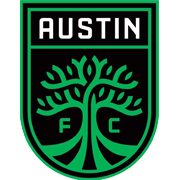|
 Beta sign-up sheet is live - Click here for the form to submit your forgiveness application: https://studentaid.gov/debt-relief/application Beta sign-up sheet is live - Click here for the form to submit your forgiveness application: https://studentaid.gov/debt-relief/application  In 2020 Joe Biden ran for President on a platform that included student loan debt relief. Today, August 24th 2022, he has taken executive action to begin to do so. In this thread we can talk about what he has done (so far) and how it affects us. I'm happy to update the OP with links to helpful sources and breakdowns, or a mod is free to do it as well. Here are some Frequently Asked Questions and answers, from the Federal Student Aid office of the Department of Education: https://studentaid.gov/debt-relief-announcement/ quote:Frequently Asked Questions: Other Student Loan Forgiveness FAQS quote:I refinanced my loans and they’re now held privately. Am I eligible for forgiveness? Here's the White House's fact sheet on the actions: https://www.whitehouse.gov/briefing...o-need-it-most/ Quoted below, minus the preamble: Today, President Biden is announcing a three-part plan to provide more breathing room to America’s working families as they continue to recover from the strains associated with the COVID-19 pandemic. This plan offers targeted debt relief as part of a comprehensive effort to address the burden of growing college costs and make the student loan system more manageable for working families. The President is announcing that the Department of Education will: Provide targeted debt relief to address the financial harms of the pandemic, fulfilling the President’s campaign commitment. The Department of Education will provide up to $20,000 in debt cancellation to Pell Grant recipients with loans held by the Department of Education, and up to $10,000 in debt cancellation to non-Pell Grant recipients. Borrowers are eligible for this relief if their individual income is less than $125,000 ($250,000 for married couples). No high-income individual or high-income household – in the top 5% of incomes – will benefit from this action. To ensure a smooth transition to repayment and prevent unnecessary defaults, the pause on federal student loan repayment will be extended one final time through December 31, 2022. Borrowers should expect to resume payment in January 2023. Make the student loan system more manageable for current and future borrowers by: Cutting monthly payments in half for undergraduate loans. The Department of Education is proposing a new income-driven repayment plan that protects more low-income borrowers from making any payments and caps monthly payments for undergraduate loans at 5% of a borrower’s discretionary income—half of the rate that borrowers must pay now under most existing plans. This means that the average annual student loan payment will be lowered by more than $1,000 for both current and future borrowers. Fixing the broken Public Service Loan Forgiveness (PSLF) program by proposing a rule that borrowers who have worked at a nonprofit, in the military, or in federal, state, tribal, or local government, receive appropriate credit toward loan forgiveness. These improvements will build on temporary changes the Department of Education has already made to PSLF, under which more than 175,000 public servants have already had more than $10 billion in loan forgiveness approved. Protect future students and taxpayers by reducing the cost of college and holding schools accountable when they hike up prices. The President championed the largest increase to Pell Grants in over a decade and one of the largest one-time influxes to colleges and universities. To further reduce the cost of college, the President will continue to fight to double the maximum Pell Grant and make community college free. Meanwhile, colleges have an obligation to keep prices reasonable and ensure borrowers get value for their investments, not debt they cannot afford. This Administration has already taken key steps to strengthen accountability, including in areas where the previous Administration weakened rules. The Department of Education is announcing new efforts to ensure student borrowers get value for their college costs. Provide Targeted Debt Relief, Fulfilling the President’s Campaign Commitment To address the financial harms of the pandemic for low- and middle-income borrowers and avoid defaults as loan repayment restarts next year, the Department of Education will provide up to $20,000 in loan relief to borrowers with loans held by the Department of Education whose individual income is less than $125,000 ($250,000 for married couples) and who received a Pell Grant. Nearly every Pell Grant recipient came from a family that made less than $60,000 a year, and Pell Grant recipients typically experience more challenges repaying their debt than other borrowers. Borrowers who meet those income standards but did not receive a Pell Grant in college can receive up to $10,000 in loan relief. The Pell Grant program is one of America’s most effective financial aid programs—but its value has been eroded over time. Pell Grant recipients are more than 60% of the borrower population. The Department of Education estimates that roughly 27 million borrowers will be eligible to receive up to $20,000 in relief, helping these borrowers meet their economic potential and avoid economic harm from the COVID-19 pandemic. Current students with loans are eligible for this debt relief. Borrowers who are dependent students will be eligible for relief based on parental income, rather than their own income. If all borrowers claim the relief they are entitled to, these actions will: Provide relief to up to 43 million borrowers, including cancelling the full remaining balance for roughly 20 million borrowers. Target relief dollars to low- and middle-income borrowers. The Department of Education estimates that, among borrowers who are no longer in school, nearly 90% of relief dollars will go to those earning less than $75,000 a year. No individual making more than $125,000 or household making more than $250,000 – the top 5% of incomes in the United States – will receive relief. Help borrowers of all ages. The Department of Education estimates that, among borrowers who are eligible for relief, 21% are 25 years and under and 44% are ages 26-39. More than a third are borrowers age 40 and up, including 5% of borrowers who are senior citizens. Advance racial equity. By targeting relief to borrowers with the highest economic need, the Administration’s actions are likely to help narrow the racial wealth gap. Black students are more likely to have to borrow for school and more likely to take out larger loans. Black borrowers are twice as likely to have received Pell Grants compared to their white peers. Other borrowers of color are also more likely than their peers to receive Pell Grants. That is why an Urban Institute study found that debt forgiveness programs targeting those who received Pell Grants while in college will advance racial equity. The Department of Education will work quickly and efficiently to set up a simple application process for borrowers to claim relief. The application will be available no later than when the pause on federal student loan repayments terminates at the end of the year. Nearly 8 million borrowers may be eligible to receive relief automatically because their relevant income data is already available to the Department. Thanks to the American Rescue Plan, this debt relief will not be treated as taxable income for the federal income tax purposes. To help ensure a smooth transition back to repayment, the Department of Education is extending the student loan pause a final time through December 31, 2022. No one with federally-held loans has had to pay a single dollar in loan payments since President Biden took office. Make the Student Loan System More Manageable for Current and Future Borrowers Fixing Existing Loan Repayment to Lower Monthly Payments The Administration is reforming student loan repayment plans so both current and future low- and middle-income borrowers will have smaller and more manageable monthly payments. The Department of Education has the authority to create income-driven repayment plans, which cap what borrowers pay each month based on a percentage of their discretionary income. Most of these plans cancel a borrower’s remaining debt once they make 20 years of monthly payments. But the existing versions of these plans are too complex and too limited. As a result, millions of borrowers who might benefit from them do not sign up, and the millions who do sign up are still often left with unmanageable monthly payments. To address these concerns and follow through on Congress’ original vision for income-driven repayment, the Department of Education is proposing a rule to do the following: For undergraduate loans, cut in half the amount that borrowers have to pay each month from 10% to 5% of discretionary income. Raise the amount of income that is considered non-discretionary income and therefore is protected from repayment, guaranteeing that no borrower earning under 225% of the federal poverty level—about the annual equivalent of a $15 minimum wage for a single borrower—will have to make a monthly payment. Forgive loan balances after 10 years of payments, instead of 20 years, for borrowers with original loan balances of $12,000 or less. The Department of Education estimates that this reform will allow nearly all community college borrowers to be debt-free within 10 years. Cover the borrower’s unpaid monthly interest, so that unlike other existing income-driven repayment plans, no borrower’s loan balance will grow as long as they make their monthly payments—even when that monthly payment is $0 because their income is low. These reforms would simplify loan repayment and deliver significant savings to low- and middle-income borrowers. For example: A typical single construction worker (making $38,000 a year) with a construction management credential would pay only $31 a month, compared to the $147 they pay now under the most recent income-driven repayment plan, for annual savings of nearly $1,400. A typical single public school teacher with an undergraduate degree (making $44,000 a year) would pay only $56 a month on their loans, compared to the $197 they pay now under the most recent income-driven repayment plan, for annual savings of nearly $1,700. A typical nurse (making $77,000 a year) who is married with two kids would pay only $61 a month on their undergraduate loans, compared to the $295 they pay now under the most recent income-driven repayment plan, for annual savings of more than $2,800. For each of these borrowers, their balances would not grow as long as they are making their monthly payments, and their remaining debt would be forgiven after they make the required number of qualifying payments. Further, the Department of Education will make it easier for borrowers who enroll in this new plan to stay enrolled. Starting in the summer of 2023, borrowers will be able to allow the Department of Education to automatically pull their income information year after year, avoiding the hassle of needing to recertify their income annually. Ensuring Public Servants Receive Credit Toward Loan Forgiveness Borrowers working in public service are entitled to earn credit toward debt relief under the Public Service Loan Forgiveness (PSLF) program. But because of complex eligibility restrictions, historic implementation failures, and poor counseling given to borrowers, many borrowers have not received the credit they deserve for their public service. The Department of Education has announced time-limited changes to PSLF that provide an easier path to forgiveness of all outstanding debt for eligible federal student loan borrowers who have served at a non-profit, in the military, or in federal, state, Tribal, or local government for at least 10 years, including non-consecutively. Those who have served less than 10 years may now more easily get credit for their service to date toward eventual forgiveness. These changes allow eligible borrowers to gain additional credit toward forgiveness, even if they had been told previously that they had the wrong loan type. The Department of Education also has proposed regulatory changes to ensure more effective implementation of the PSLF program moving forward. Specifically, the Department of Education has proposed allowing more payments to qualify for PSLF including partial, lump sum, and late payments, and allowing certain kinds of deferments and forbearances, such as those for Peace Corps and AmeriCorps service, National Guard duty, and military service, to count toward PSLF. The Department of Education also proposed to ensure the rules work better for non-tenured instructors whose colleges need to calculate their full-time employment. To ensure borrowers are aware of the temporary changes, the White House has launched four PSLF Days of Action dedicated to borrowers in specific sectors: government employees, educators, healthcare workers and first responders, and non-profit employees. You can find out other information about the temporary changes on PSLF.gov. You must apply to PSLF before the temporary changes end on October 31, 2022. Protecting Borrowers and Taxpayers from Steep Increases in College Costs While providing this relief to low- and middle-income borrowers, the President is focused on keeping college costs under control. Under this Administration, students have had more money in their pockets to pay for college. The President signed the largest increase to the maximum Pell Grant in over a decade and provided nearly $40 billion to colleges and universities through the American Rescue Plan, much of which was used for emergency student financial aid, allowing students to breathe a little easier. Additionally, the Department of Education has already taken significant steps to strengthen accountability, so that students are not left with mountains of debt with little payoff. The agency has re-established the enforcement unit in the Office of Federal Student Aid and it is holding accreditors’ feet to the fire. In fact, the Department just withdrew authorization for the accreditor that oversaw schools responsible for some of the worst for-profit scandals. The agency will also propose a rule to hold career programs accountable for leaving their graduates with mountains of debt they cannot repay, a rule the previous Administration repealed. Building off of these efforts, the Department of Education is announcing new actions to hold accountable colleges that have contributed to the student debt crisis. These include publishing an annual watch list of the programs with the worst debt levels in the country, so that students registering for the next academic year can steer clear of programs with poor outcomes. They also include requesting institutional improvement plans from the worst actors that outline how the colleges with the most concerning debt outcomes intend to bring down debt levels. Somebody fucked around with this message at 20:52 on Oct 16, 2022 |
|
|
|

|
| # ? Apr 30, 2024 05:43 |
|
Personally, I think it's great, and is a great first step to continue things in the future.
|
|
|
|
I just finished paying off my student loans last month  In all seriousness, Biden's plan makes sense from all sides - the people for which the relief helps the most are the most vulnerable and the end result won't damage anyone who can't absorb it.
|
|
|
|
But what about me?! The picked-myself-up-by-the-bootstraps borrower who budgeted over the past decade and paid off $35k without these Biden Bucks?
|
|
|
|
Am I correctly understanding that the raise in discretionary income wouldn't apply to graduate debt holders? What the gently caress. I'm a university-level teacher and this would be the only way any of these changes improve the status quo for me if this is the case.
|
|
|
|
Edward Mass posted:I just finished paying off my student loans last month I think they’re doing refunds of payments as well 
|
|
|
|
Zophar posted:Am I correctly understanding that the raise in discretionary income wouldn't apply to graduate debt holders? What the gently caress. I'm a university-level teacher and this would be the only way any of these changes improve the status quo for me if this is the case. I'm not quite clear about whether that applies to Graduate debt. I'm in the same boat, all of my debt is from grad school, so I dearly hope that we will be included.
|
|
|
|
Zophar posted:Am I correctly understanding that the raise in discretionary income wouldn't apply to graduate debt holders? What the gently caress. I'm a university-level teacher and this would be the only way any of these changes improve the status quo for me if this is the case. While it’s unclear, how I read this is the only part that wouldn’t apply to grad loans is the 5% cap, not the other changes. So graduate loans would have the other pieces… but be capped at 10% (of the lower number of discretionary income.)
|
|
|
|
Upgrade posted:I think they’re doing refunds of payments as well Where do you see this??
|
|
|
|
AsInHowe posted:Where do you see this?? If you’ve voluntarily made payments since the pause (Feb 2020) you can request a refund for those payments
|
|
|
|
Upgrade posted:If you’ve voluntarily made payments since the pause (Feb 2020) you can request a refund for those payments Okay.
|
|
|
|
We still don't know if FFEL loans apply correct?
|
|
|
|
AsInHowe posted:Where do you see this?? I actually got a letter about my auto payment that went through a few days after the moratorium began in 2020. After a call, they refunded it via direct deposit in about 10 days.
|
|
|
|
I qualify for the 20k relief since I got Pell grants but I only have 3k left since I accelerated loan payoffs, alas!* I really didn't think he'd do it. Congrats to those who are gonna have a huge chunk of debt wiped out * Biden if you're reading this and want to just give me 17k in cash I'm listening
|
|
|
|
Mecca-Benghazi posted:I qualify for the 20k relief since I got Pell grants but I only have 3k left since I accelerated loan payoffs, alas!* I really didn't think he'd do it. Congrats to those who are gonna have a huge chunk of debt wiped out If this is accurate, then you might want to look into it and get some refunds. Upgrade posted:If you’ve voluntarily made payments since the pause (Feb 2020) you can request a refund for those payments
|
|
|
|
I have around 120k in debt, all from my master's. It's all government loans serviced by MOHELA. This was from 2018-2020. I have always been during the pause so I've never been on a repayment plan. I do come in under the income cap. I HAVE made repayments to get the principle down, including at least 10k during the pause. Does this mean I could get the 10k back I've paid, then switch to an income driven plan where my interest wouldn't increase as long as I make the monthly payment which is capped at 10% of AGI?
|
|
|
|
This is a great thread, and thank you for making it How are u! I hope many posters find help and resources here.
|
|
|
|
Are graduate loans a part of the forgiveness?
|
|
|
|
Leon Trotsky 2012 posted:If this is accurate, then you might want to look into it and get some refunds. Called up my student loan servicer, Great Lakes, on hold for half an hour. I was armed with the amounts I wanted refunded (I paid ~1.1k since March 13, 2020, which is the cutoff), but when I got through, I said I wanted a refund of the money since the student loan deferrals started. The guy was like "sure, looks like it's these two payments, I was gonna ask if you wanted PSLF, but it's not worth it for this amount, and you want the refund for the 10k forgiveness?" (I didn't say a word about the forgiveness but I imagine they've been getting a lot of calls) So easy peasy to get a refund for payments since the pandemic kicked off if you have the time to sit next to your phone for half an hour. 
|
|
|
|
Blitz of 404 Error posted:Are graduate loans a part of the forgiveness? Graduate loans are part of the forgiveness.
|
|
|
|
Mecca-Benghazi posted:Called up my student loan servicer, Great Lakes, on hold for half an hour. I was armed with the amounts I wanted refunded (I paid ~1.1k since March 13, 2020, which is the cutoff), but when I got through, I said I wanted a refund of the money since the student loan deferrals started. The guy was like "sure, looks like it's these two payments, I was gonna ask if you wanted PSLF, but it's not worth it for this amount, and you want the refund for the 10k forgiveness?" (I didn't say a word about the forgiveness but I imagine they've been getting a lot of calls) That's awesome! Thanks to Upgrade for making that information known. I was not aware until they posted it.
|
|
|
|
According to this NYT article, FFEL loans are definitely not in the running for cancellation (which we had sort of assumed, but not directly known). Gonna consolidate I guess. edit: forgot link https://www.nytimes.com/2022/08/24/...lled%20F.F.E.L. BonoMan fucked around with this message at 02:46 on Aug 25, 2022 |
|
|
|
Does anyone have a good link to American income percentiles? I've seen this study get shared a lot. https://budgetmodel.wharton.upenn.edu/issues/2022/8/23/forgiving-student-loans I think the following blurb is very deceptive, but people are latching on to it. quote:Between 69 and 73 percent of the debt forgiven accrues to households in the top 60 percent of the income distribution. I've been trying to reverse engineer what "top 60 percent of the income distribution" means. I guess it means over $82,000 according to their graphs? Assuming working parents, you could theoretically be a couple with $40k salaries each? The wording seems so squirrely to me. Something doesn't sit right. EDIT: I mean, couldn't you read top 60% of income distribution then as anyone over the 40th percentile (which they have down as $50,795)? Eric Cantonese fucked around with this message at 03:29 on Aug 25, 2022 |
|
|
|
BonoMan posted:According to this NYT article, FFEL loans are definitely not in the running for cancellation (which we had sort of assumed, but not directly known). Thanks for the link. Lots of good info in there. It says some FFEL are eligible for forgiveness. If they were eligible for the pause, then they are eligible for forgiveness.
|
|
|
|
Eric Cantonese posted:Does anyone have a good link to American income percentiles? I've seen this study get shared a lot. Sounds close. Here's a visualization of census data. https://www.visualcapitalist.com/us-household-income-distribution-visualized-100-homes/ Here's the actual census data report if you want o see the source. https://www.census.gov/content/dam/Census/library/publications/2021/demo/p60-273.pdf Basically, median household income for a family (That's the amount where half the population has more, half has less) is $67,521. Now, obviously, this is for everybody. There are demographic breakdowns in the report by race, region, education level, etc. The report has a bunch of other stats too, and is worth checking out.
|
|
|
|
Leon Trotsky 2012 posted:Thanks for the link. Lots of good info in there. My FFEL definitely weren't eligible for the pause. I've been paying (very large) payments all through the pandemic. Oof.
|
|
|
|
Epicurius posted:Sounds close. Here's a visualization of census data. Thanks! These are helpful links. I still can't help but feel like that Wharton study I linked to was deceptively worded.
|
|
|
|
Eric Cantonese posted:Thanks! These are helpful links. That study also doesn't account for the fact that 60% of borrowers (all on the lower income end) got $20k forgiven. But, even with the income cap and bonus forgiveness for lower-income people, it is still likely to be around the middle.
|
|
|
|
So I've got some questions. I finally got into the FSA site and I suppose I did not have any Pell grants, which is really a bummer because I could have sworn I did. But FSA says I don't have any grants, so gently caress me I guess. However: 1. Is this new PSLF concept where loans are forgiven after 10 years of repayment rather than 20 retroactive? I've been on the "work at a non-profit for 10 years and maybe we'll throw you a bone" plan for about 7 years, collectively, since 2013 when I graduated, but I think I started paying on some of my earlier loans before I even graduated... I think? It's hard to check because all the servicer sites are running at a snail's pace right now. I started college in 2008 and graduated in 2013. I currently have just about 24k in debt. After the 10k loan forgiveness, I'd be at 14k. If I knock down that balance to under 12k by sometime next year, would that all be forgiven? Then again, I haven't paid on my FedLoan since around the time the pause started, so that kind of fucks things up a bit, I think. Not that I can figure it out, I'm having trouble accessing that information now that Nelnet has my loans. I never stopped paying AES or Navient because I wanted to pay down the interest if at all possible. 2. How is the forgiveness allocated? Like I'd like to wipe out my Navient and AES loans first because gently caress Navient. And that's after getting a refund for every diligent payment I've made since the pause if I can. Then push whatever's left into the higher interest loans from FedLoan/Nelnet.
|
|
|
|
Leon Trotsky 2012 posted:That study also doesn't account for the fact that 60% of borrowers (all on the lower income end) got $20k forgiven. Well, 60% of borrowers on the lower income end when they took out the loans and filed for a Pell grant. They might not be poor now. Nitpick, maybe.
|
|
|
|
cool i wasn't gonna pay them anyway
|
|
|
|
Framboise posted:So I've got some questions. 1) PSLF is different that the new IDR loan terms. PSLF still forgives everything after 10 years of payments while working at a qualifying job. 2) I don't know how it is allocated between multiple loans, but you definitely can get a refund for any payments made since March 13th, 2020. They are required to give it to you.
|
|
|
|
Leon Trotsky 2012 posted:1) PSLF is different that the new IDR loan terms. PSLF still forgives everything after 10 years of payments while working at a qualifying job. dear god I don't want to work at this job for 3-4 more years. Okay, so rephrasing that, if I apply for this IDR plan, is it retroactive in the sense that I've already been paying for nearly 10 years and I can, if I push myself, knock that number from 14k to 12k after the 10k forgiveness? And I wouldn't need to have been at a job I've been miserable at for around 7 years? (2013-2014, left and came back in 2016 and have been back ever since). I just want this loving dark cloud to stop looming over my head.
|
|
|
|
We did a $25k balloon payment to get rid of my wife's loans a few months ago. Am I to understand that even in our case where there is no current outstanding balance we should (assuming there's not something goofy) be able to get $10k back? That would be huge for our 4 and 6 year olds' futures.
|
|
|
|
Framboise posted:1. Is this new PSLF concept where loans are forgiven after 10 years of repayment rather than 20 retroactive? I've been on the "work at a non-profit for 10 years and maybe we'll throw you a bone" plan for about 7 years, collectively, since 2013 when I graduated, but I think I started paying on some of my earlier loans before I even graduated... I think? It's hard to check because all the servicer sites are running at a snail's pace right now. Questions for you. First, are your AES/Navient loans government issued or private issued? And are you in the PSLF right now? Because part of getting on that involved consolidating your loans and getting serviced by FedLoan. Part of the reason I ask is because I didn't think haven't serviced govt loans anymore. Also, if you're on PSLF, they should have been rolled in. If the Navient/AES loans are private, they don't qualify under the program. Also, if you're on PSLF, it seems to make sense to stay on it. If you've been working for 7 years, you only have 3 left. I don't think there are any details yet if this new income based plan will be accepted by PSLF. quote:. Okay, so rephrasing that, if I apply for this IDR plan, is it retroactive in the sense that I've already been paying for nearly 10 years and I can, if I push myself, knock that number from 14k to 12k after the 10k forgiveness? And I wouldn't need to have been at a job I've been miserable at for around 7 years? (2013-2014, left and came back in 2016 and have been back ever since) Sorry. Didn't know you hated your job. Unfortunately, there doesn't seem to be enough info about the new repayment plan released yet. Epicurius fucked around with this message at 04:07 on Aug 25, 2022 |
|
|
|
Framboise posted:dear god I don't want to work at this job for 3-4 more years. I don't believe the new IDR loan is retroactive, unless you have already been making income based repayments, but the PSLF is retroactive for any qualifying job worked since 2008. The PSFL retroactivity is because the Biden admin issued a special waiver for it. They theoretically could issue a similar waiver for the new IDR loan, but they have not ever said anything about it (partially because the new IDR loan was never mentioned publicly until today). I wouldn't bank on a waiver for it. You need 10 years total or 120 payments for PSLF forgiveness. If you have already been making income-based repayments, then you might be able to get the remaining ~12k forgiven in a few years by converting to the IDR plan. If you haven't been on an income-based repayment plan, then it would probably be worth it to just stay at your current job or find another qualifying job for the next 3 years to get the full forgiveness.
|
|
|
|
Epicurius posted:Questions for you. First, are your AES/Navient loans government issued or private issued? And are you in the PSLF right now? Because part of getting on that involved consolidating your loans and getting serviced by FedLoan. I could swear I'm in the PSLF, but looking on FSA it looks like my repayment plan is PAYE? I don't understand this stuff, I could swear I signed up for PSLF. As for AES/Navient, I don't know how to tell if they're govt issued or private issued. I don't think I've ever consolidated though... quote:If the Navient/AES loans are private, they don't qualify under the program. Also, if you're on PSLF, it seems to make sense to stay on it. If you've been working for 7 years, you only have 3 left. I don't think there are any details yet if this new income based plan will be accepted by PSLF. yyyyeah this job has been doing tremendous harm to my mental health and I do not know how much longer I can handle it. I've been trying to get a new job but the ones I've been looking at haven't been nonprofits. Leon Trotsky 2012 posted:I don't believe the new IDR loan is retroactive, unless you have already been making income based repayments, but the PSLF is retroactive for any qualifying job worked since 2008. The PSFL retroactivity is because the Biden admin issued a special waiver for it. They theoretically could issue a similar waiver for the new IDR loan, but they have not ever said anything about it (partially because the new IDR loan was never mentioned publicly until today). I wouldn't bank on a waiver for it. Does the PAYE plan count then? That's apparently what my FedLoan ones were under. I'm not currently on a repayment plan with AES or Navient because they decided I make too much for it, I guess?
|
|
|
|
Also, one thing that I haven't seen mentioned yet, according to a Nelnet call yesterday, is that the highest interest loans will get paid off first.
|
|
|
|
Framboise posted:I could swear I'm in the PSLF, but looking on FSA it looks like my repayment plan is PAYE? I don't understand this stuff, I could swear I signed up for PSLF. PAYE is fine for PSLF. PSLF doesn't determine your monthly payments. It determines if you get it all forgiven after 10 years/120 payments. PAYE determines what your monthly payments are and it is income-based, so you might be able to swap it to the new IDR plan if you want. You are probably all good. You might just want to suck it up for 3 more years at your current job or another qualifying one and make sure you are eligible/enrolled in PSLF to get that last 14k forgiven. If the new IDR plan is retroactive to IBR/PAYE payments, then you can enroll in it and get it forgiven after 10 years without PSLF. But, they haven't given any details about whether the IDR will be or not, so don't plan on it for now.
|
|
|
|

|
| # ? Apr 30, 2024 05:43 |
|
Leon Trotsky 2012 posted:PAYE is fine for PSLF. PSLF doesn't determine your monthly payments. gently caress.  They really did everything they could to make this whole system as arcane and incomprehensible as possible for an 18 year old to get suckered into under extreme pressure of future worthlessness. Surprise, I ended up there anyway, just with hefty debt as the cherry on top.
|
|
|


























